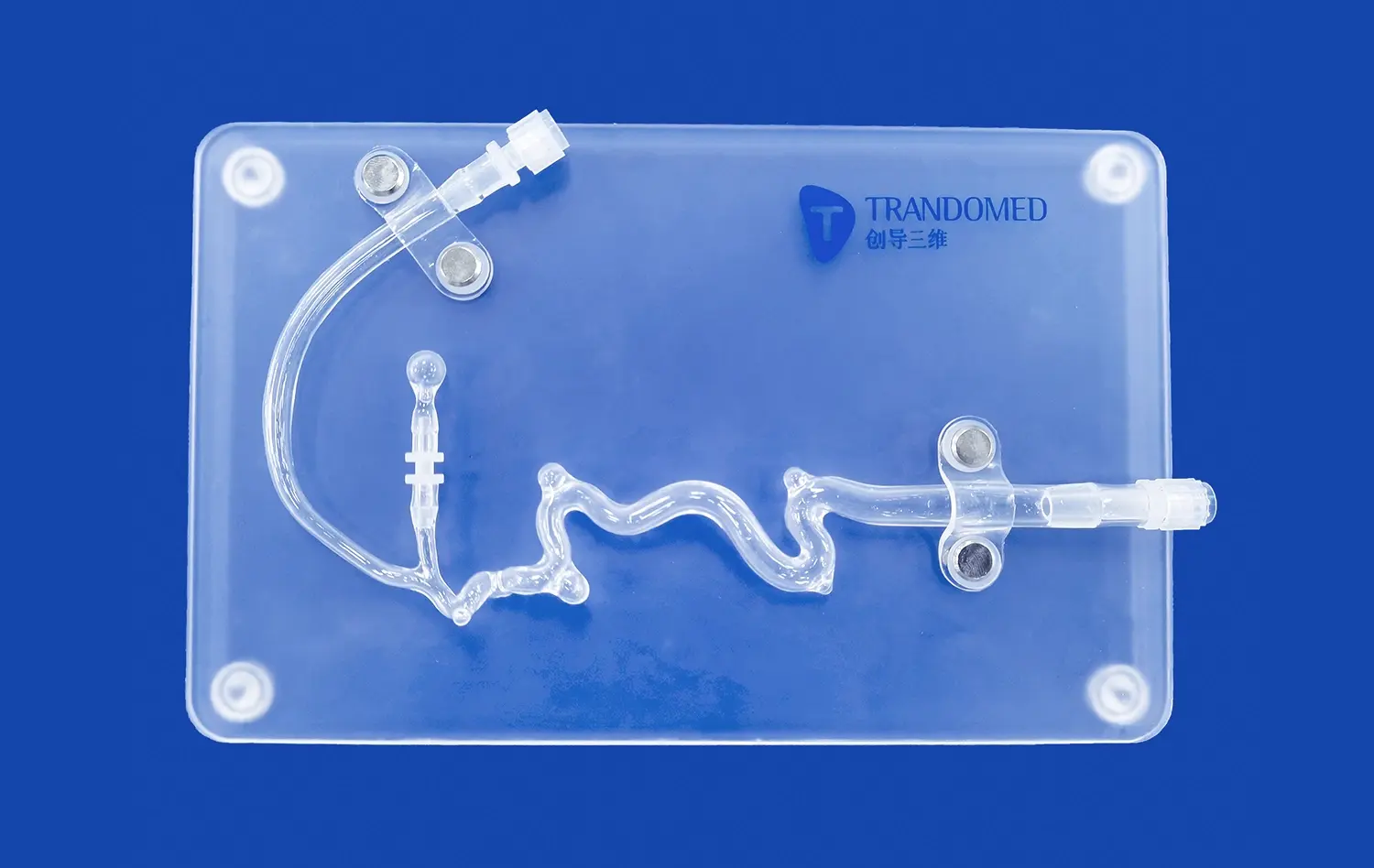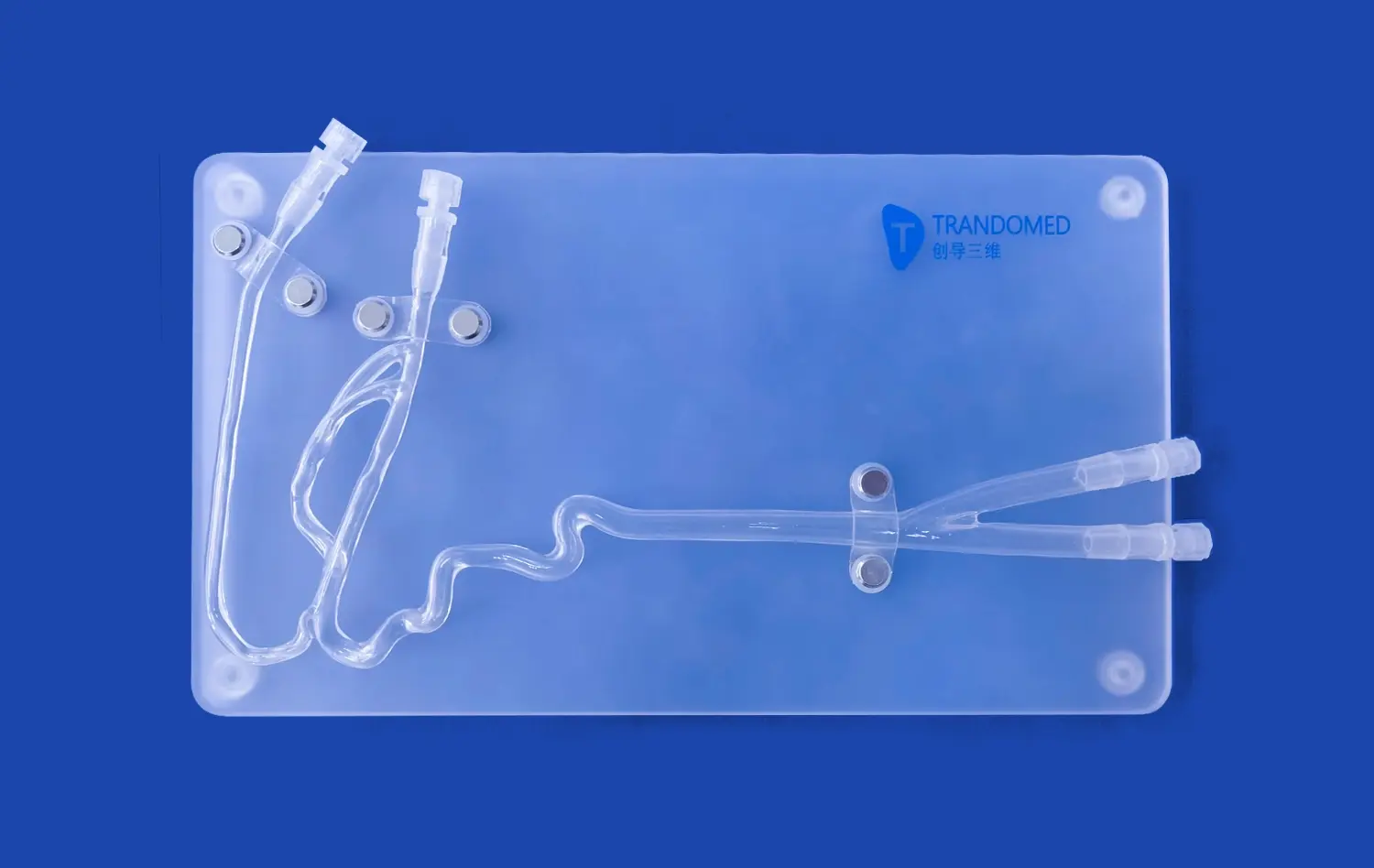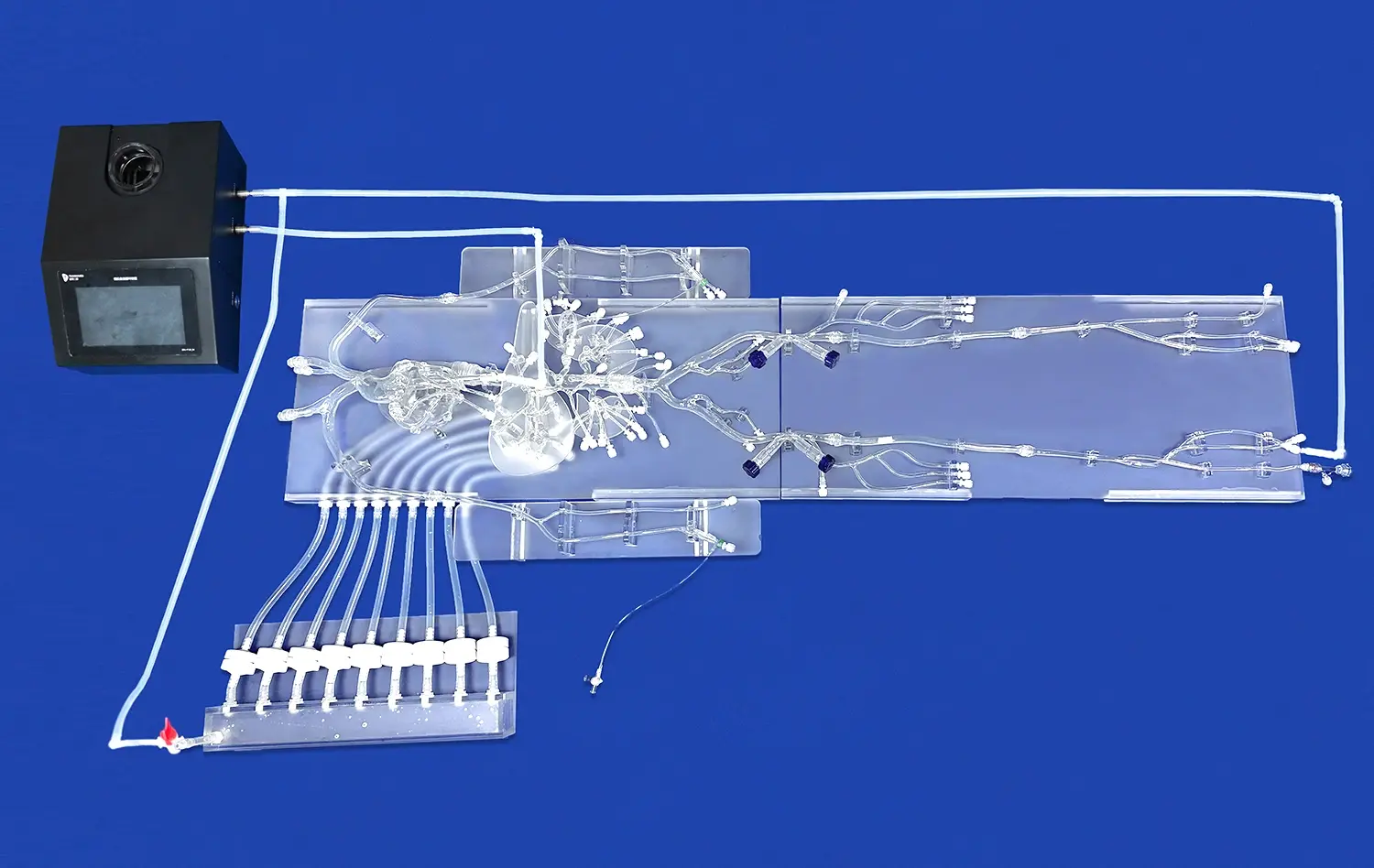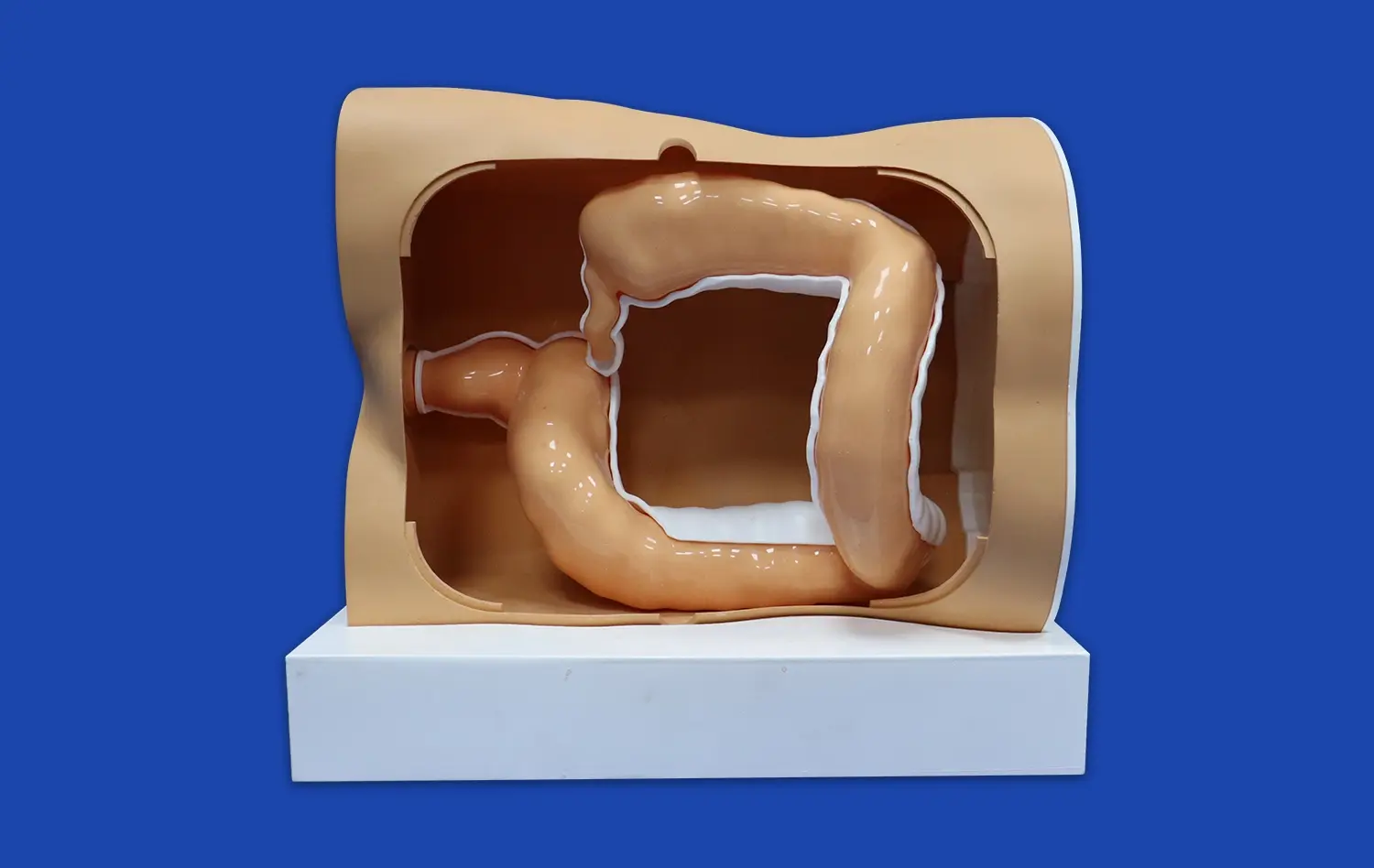Applications of PCI Training Models in Interventional Cardiology
2025-07-08 09:00:00
Percutaneous Coronary Intervention (PCI) training models have revolutionized the field of interventional cardiology, offering a safe and effective platform for cardiologists to hone their skills. These advanced simulation tools provide a realistic environment for practitioners to master complex procedures without risking patient safety. By incorporating 3D-printed silicone medical simulators, PCI training models allow interventional cardiologists to practice a wide range of scenarios, from routine angioplasties to challenging cases involving chronic total occlusions (CTOs) and bifurcation lesions. The application of these models extends beyond basic skill acquisition, enabling seasoned professionals to familiarize themselves with novel devices and techniques. Moreover, PCI simulators play a crucial role in reducing complication rates and enhancing overall patient outcomes by allowing for meticulous pre-procedural planning and rehearsal. As the complexity of coronary interventions continues to grow, the importance of high-fidelity training models in interventional cardiology education and skill maintenance cannot be overstated.
Simulating CTOs, Bifurcations, and Calcified Vessels for Advanced PCI Training
Mastering Complex Coronary Anatomies
PCI training models excel in replicating intricate coronary anatomies, providing interventional cardiologists with the opportunity to navigate challenging scenarios. These simulators offer a diverse range of vessel configurations, including tortuous paths, varying degrees of stenosis, and complex bifurcations. By working with these realistic models, practitioners can develop the dexterity and decision-making skills required to manage difficult cases in clinical practice.
The ability to simulate chronic total occlusions (CTOs) is particularly valuable. CTOs present unique challenges in interventional cardiology, often requiring specialized techniques and equipment. PCI training models allow cardiologists to practice CTO recanalization strategies, such as antegrade and retrograde approaches, in a controlled environment. This hands-on experience is invaluable for building confidence and competence in tackling these high-risk procedures.
Enhancing Skills in Calcified Lesion Management
Calcified coronary lesions pose significant challenges during PCI procedures. Advanced PCI training models incorporate varying degrees of calcification, enabling interventionists to refine their techniques for lesion preparation and stent deployment. Practitioners can experiment with different modalities, such as rotational atherectomy or cutting balloons, to optimize their approach to calcified vessels. This targeted training helps reduce procedure times and improves outcomes in real-world scenarios involving heavily calcified coronary arteries.
By providing a platform to practice these advanced techniques, PCI simulators bridge the gap between theoretical knowledge and practical application. Interventional cardiologists can refine their skills in a risk-free environment, leading to improved performance and patient safety in the catheterization laboratory.
Accelerating the Learning Curve for Novel PCI Devices and Techniques
Familiarization with Cutting-Edge Technologies
The field of interventional cardiology is continually evolving, with new devices and techniques emerging regularly. PCI training models serve as an essential tool for rapidly familiarizing practitioners with these innovations. Whether it's the latest generation of drug-eluting stents, bioresorbable scaffolds, or novel imaging modalities, these simulators provide a realistic platform for hands-on experience.
Interventional cardiologists can practice deploying and positioning new stent designs, understanding their unique characteristics and potential applications. This accelerated learning process ensures that practitioners are well-prepared to incorporate cutting-edge technologies into their clinical practice, ultimately benefiting patients through access to the most advanced treatment options.
Mastering Advanced Intervention Techniques
Beyond device familiarity, PCI training models are instrumental in helping cardiologists master advanced intervention techniques. Complex procedures such as left main coronary artery interventions, bifurcation stenting strategies, and intravascular lithotripsy can be simulated with high fidelity. These models allow for repetitive practice and refinement of techniques, enabling interventionists to develop muscle memory and procedural efficiency.
The ability to practice these advanced techniques in a controlled environment is particularly valuable for less experienced operators. It allows them to gain confidence and proficiency before performing procedures on actual patients, thereby flattening the learning curve and potentially reducing procedure-related complications.
Reducing Complication Rates and Enhancing Patient Safety Through Realistic Pre-Clinical Training
Mitigating Procedural Risks
One of the most significant advantages of PCI training models is their role in mitigating procedural risks. By providing a realistic simulation of potential complications, these models allow interventional cardiologists to develop strategies for managing adverse events. Practitioners can rehearse their response to scenarios such as coronary perforation, acute vessel closure, or side branch occlusion in a risk-free environment.
This pre-clinical training is invaluable for reducing complication rates in real-world procedures. Cardiologists who have practiced managing complications on simulators are better prepared to handle unexpected events during actual interventions, potentially improving patient outcomes and reducing the incidence of procedure-related morbidity and mortality.
Enhancing Team Dynamics and Communication
PCI training models also play a crucial role in improving team dynamics within the catheterization laboratory. These simulators can be used for team-based training exercises, allowing interventional cardiologists to work alongside nurses, technicians, and other support staff in a simulated environment. This collaborative approach helps refine communication skills, streamline workflow, and enhance overall team performance.
By practicing complex scenarios as a team, all members of the catheterization laboratory staff can become more adept at anticipating needs, responding to challenges, and working cohesively under pressure. This improved teamwork translates directly to enhanced patient safety and more efficient procedures in real clinical settings.
Conclusion
PCI training models have emerged as an indispensable tool in the field of interventional cardiology, offering a multifaceted approach to skill development and patient safety enhancement. These advanced simulators provide a realistic platform for mastering complex coronary anatomies, familiarizing with cutting-edge technologies, and refining team dynamics. By allowing practitioners to hone their skills in a risk-free environment, PCI training models contribute significantly to reducing complication rates and improving overall patient outcomes. As the complexity of coronary interventions continues to evolve, the role of high-fidelity simulation in cardiology education and ongoing professional development will undoubtedly become even more critical.
Contact Us
To learn more about our advanced PCI training models and how they can benefit your interventional cardiology program, please contact us at jackson.chen@trandomed.com. Our team of experts is ready to help you elevate your training capabilities and enhance patient care through state-of-the-art simulation technology.
References
Smith, J. A., et al. (2022). "Impact of High-Fidelity PCI Simulation on Interventional Cardiology Training Outcomes." Journal of Interventional Cardiology, 35(2), 178-186.
Johnson, M. R., et al. (2021). "Advanced PCI Training Models: A Comprehensive Review of Current Technologies and Future Directions." Catheterization and Cardiovascular Interventions, 98(4), 723-735.
Garcia, L. F., et al. (2023). "Simulation-Based Learning in Interventional Cardiology: A Systematic Review and Meta-Analysis." JACC: Cardiovascular Interventions, 16(7), 1452-1465.
Chen, Y. H., et al. (2022). "The Role of 3D-Printed Silicone Models in Enhancing PCI Training: A Multicenter Study." EuroIntervention, 18(9), 742-750.
Thompson, R. C., et al. (2021). "Integration of Virtual Reality and 3D-Printed Models in PCI Training: A Next-Generation Approach." Circulation: Cardiovascular Interventions, 14(6), e010123.
Patel, K. S., et al. (2023). "Improving Patient Outcomes Through Advanced PCI Simulation: A Prospective Cohort Study." European Heart Journal, 44(21), 1987-1996.

_1736214519364.webp)
_1734507205192.webp)











